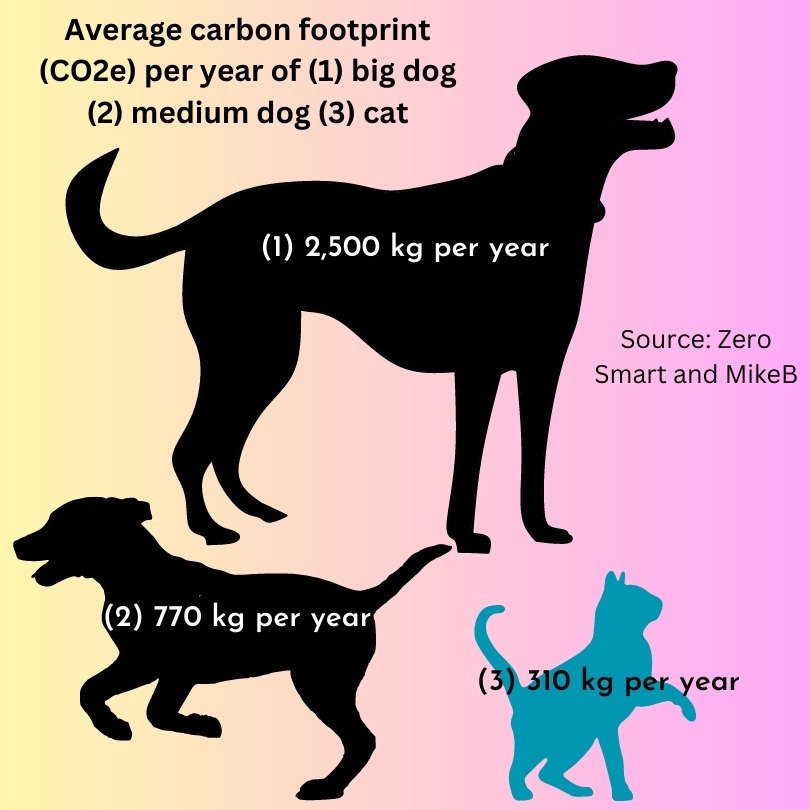UCLA researchers calculated that meat-eating by dogs and cats creates the equivalent of about 64 million tons of carbon dioxide a year, which has about the same climate impact as a year’s worth of driving from 13.6 million cars. - Zero Smart
Here is an infographic on the topic:
 |
| Carbon footprint equivalent (CO2e) of a pet cat and dog. Infographic by MikeB |
Suppressing our carbon footprint
What can we do to contribute to suppressing global warming as pet owners? We can buy pet products which are not made from plastic which is made from petroleum. There is an added benefit in not buying plastic toys for cats. Cats can't destroy plastic toys that are meant to substitute prey animals. This leads to boredom. Environmentally beneficial cat toys made from sustainable materials will normally be more prey-like as they can be damaged. This might be more engaging for the domestic cat.
Carbon offset is one thing we can do such as doing other things which minimises our carbon footprint. You can plant a tree in your backyard for instance. If you have a backyard.
Get rid of the car! If you live in the UK, the government wants us to dump our cars because of extensive 20 mph speed limits. Use Uber instead or bike to the shops or get a bus. That would be a form of carbon offset to counteract your pets contribution to global warming.
It is hard to reduce a pet's carbon footprint in terms of food, I feel. There is one controversial thing: buy vegan cat food. Sounds mad but it works. DON'T FEED YOUR CAT VEGAN FOOD! But commercially made dry, vegan cat food contains all the nutrients needed. Plant protein substitutes animal protein. Nutrients are added in. That would reduce a pet's carbon footprint. Check it out.
Carbon dioxide equivalent - CO2e
CO2e stands for carbon dioxide equivalent. It is a metric used to measure the global warming potential (GWP) of different greenhouse gases relative to carbon dioxide (CO2). The concept of CO2e allows for the comparison of the warming effects of various greenhouse gases based on their ability to trap heat in the Earth's atmosphere over a specific time frame, typically over 100 years.Different greenhouse gases have different heat-trapping abilities and lifetimes in the atmosphere. For instance, methane (CH4) is a potent greenhouse gas that has a higher heat-trapping capacity than carbon dioxide but has a shorter lifespan. CO2e provides a standardized measure that converts the warming potential of all greenhouse gases into the equivalent amount of carbon dioxide that would have the same warming effect over a given period.
By expressing emissions in CO2e, it becomes easier to compare and aggregate the total greenhouse gas emissions from different sources, such as carbon dioxide, methane, nitrous oxide, and others. This metric is commonly used in climate change research, environmental assessments, and carbon footprint calculations to quantify and manage greenhouse gas emissions.

No comments:
Post a Comment
Your comments are always welcome.